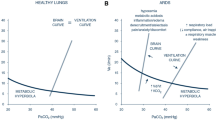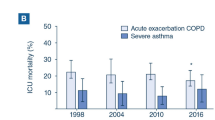Abstract
Purpose
To identify the effect of the benzimidazalone derivative, NS1619, on modulating pulmonary vascular tone in lungs from rats exposed to normoxia (21 % FiO2) or chronic hypoxia (10 % FiO2) for three weeks.
Methods
Isolated perfused lungs were preconstricted (U46619), and dose-dependent vasodilation to NS1619 was assessed. To elucidate the mechanisms responsible, NS1619 vasodilatory responses were assessed following inhibition of large-conductance Ca2+-activated (BKCa; iberiotoxin and paxilline), L-type Ca2+ (nifedipine), K+ (tetraethylammonium), Cl− (niflumic acid), and cation/TRP (lanthanum) channels, as well as nitric oxide synthase (L-NAME).
Results
Compared to normoxia, NS1619-induced vasodilation was significantly greater following hypoxia; however, NO-dependent vasodilation and BKCa-mediated vasodilation, in response to NS1619, were similar in the normoxic and hypoxic lungs. In contrast, direct activation of L-type Ca2+ and non-BKCa K+ channel was involved in the NS1619-induced vasodilation only in hypoxic lungs.
Conclusions
NS1619 causes pulmonary vasodilation by affecting multiple complementary pathways, including stimulation of NO production, activation of BKCa channels, other TEA-sensitive K+ channels, and L-type Ca2+ channels, and could be considered as a therapeutic agent in hypoxic PH.




Similar content being viewed by others
References
Ghofrani HA, Voswinckel R, Reichenberger F, Weissmann N, Schermuly RT, Seeger W, Grimminger F (2006) Hypoxia- and non-hypoxia-related pulmonary hypertension—established and new therapies. Cardiovasc Res 72(1):30–40. doi:10.1016/j.cardiores.2006.07.025
Budhiraja R, Tuder RM, Hassoun PM (2004) Endothelial dysfunction in pulmonary hypertension. Circulation 109(2):159–165. doi:10.1161/01.CIR.0000102381.57477.50
Stenmark KR, Fagan KA, Frid MG (2006) Hypoxia-induced pulmonary vascular remodeling: cellular and molecular mechanisms. Circ Res 99(7):675–691. doi:10.1161/01.RES.0000243584.45145.3f
Pak O, Aldashev A, Welsh D, Peacock A (2007) The effects of hypoxia on the cells of the pulmonary vasculature. Eur Respir J 30(2):364–372. doi:10.1183/09031936.00128706
Wan J, Yamamura A, Zimnicka AM, Voiriot G, Smith KA, Tang H, Ayon RJ, Choudhury MS, Ko EA, Wang J, Wang C, Makino A, Yuan JX (2013) Chronic hypoxia selectively enhances L- and T-type voltage-dependent Ca2+ channel activity in pulmonary artery by upregulating Cav1.2 and Cav3.2. Am J Physiol Lung Cell Mol Physiol 305(2):L154–L164. doi:10.1152/ajplung.00313.2012
Bonnet S, Archer SL (2007) Potassium channel diversity in the pulmonary arteries and pulmonary veins: implications for regulation of the pulmonary vasculature in health and during pulmonary hypertension. Pharmacol Ther 115(1):56–69. doi:10.1016/j.pharmthera.2007.03.014
Peinado VI, París R, Ramírez J, Roca J, Rodriguez-Roisin R, Barberà JA (2008) Expression of BK(Ca) channels in human pulmonary arteries: relationship with remodeling and hypoxic pulmonary vasoconstriction. Vascul Pharmacol 49(4–6):178–184. doi:10.1016/j.vph.2008.07.006
Resnik E, Herron J, Fu R, Ivy DD, Cornfield DN (2006) Oxygen tension modulates the expression of pulmonary vascular BKCa channel alpha- and beta-subunits. Am J Physiol Lung Cell Mol Physiol 290(4):L761–L768. doi:10.1152/ajplung.00283.2005
Weir EK, Cabrera JA, Mahapatra S, Peterson DA, Hong Z (2010) The role of ion channels in hypoxic pulmonary vasoconstriction. Adv Exp Med Biol 661:3–14. doi:10.1007/978-1-60761-500-2_1
Vang A, Mazer J, Casserly B, Choudhary G (2010) Activation of endothelial BKCa channels causes pulmonary vasodilation. Vascul Pharmacol. 53(3–4):122–129. doi:10.1016/j.vph.2010.05.001
Holland M, Langton PD, Standen NB, Boyle JP (1996) Effects of the BKCa channel activator, NS1619, on rat cerebral artery smooth muscle. Br J Pharmacol 117(1):119–129
Kuhlmann CR, Trumper JR, Abdallah Y, Wiebke Ludders D, Schaefer CA, Most AK, Backenkohler U, Neumann T, Walther S, Piper HM, Tillmanns H, Erdogan A (2004) The K+-channel opener NS1619 increases endothelial NO-synthesis involving p42/p44 MAP-kinase. Thromb haemost 92(5):1099–1107. doi:10.1267/THRO04051099
Edwards G, Niederste-Hollenberg A, Schneider J, Noack T, Weston AH (1994) Ion channel modulation by NS 1619, the putative BKCa channel opener, in vascular smooth muscle. Br J Pharmacol 113(4):1538–1547
Choudhary G, Troncales F, Martin D, Harrington EO, Klinger J (2011) Bosentan attenuates right ventricular hypertrophy and fibrosis in normobaric hypoxia model of pulmonary hypertension. J Heart Lung Transplant 30(7):827–833. doi:10.1016/j.healun.2011.03.010
Godinez RI, Longmore WJ (1973) Use of the isolated perfused rat lung in studies on lung lipid metabolism. J Lipid Res 14(2):138–144
Watkins CA, Rannels DE (1979) In situ perfusion of rat lungs: stability and effects of oxygen tension. J Appl Physiol 47(2):325–329
Thebaud B, Michelakis E, Wu XC, Harry G, Hashimoto K, Archer SL (2002) Sildenafil reverses O2 constriction of the rabbit ductus arteriosus by inhibiting type 5 phosphodiesterase and activating BK(Ca) channels. Pediatr Res 52(1):19–24. doi:10.1203/00006450-200207000-00006
Bentzen BH, Osadchii O, Jespersen T, Hansen RS, Olesen SP, Grunnet M (2009) Activation of big conductance Ca(2+)-activated K (+) channels (BK) protects the heart against ischemia-reperfusion injury. Pflugers Arch 457(5):979–988. doi:10.1007/s00424-008-0583-5
McKenzie C, MacDonald A, Shaw AM (2009) Mechanisms of U46619-induced contraction of rat pulmonary arteries in the presence and absence of the endothelium. Br J Pharmacol 157(4):581–596. doi:10.1111/j.1476-5381.2008.00084.x
Eichhorn B, Dobrev D (2007) Vascular large conductance calcium-activated potassium channels: functional role and therapeutic potential. Naunyn Schmiedebergs Arch Pharmacol 376(3):145–155. doi:10.1007/s00210-007-0193-3
Simon A, Harrington EO, Liu GX, Koren G, Choudhary G (2009) Mechanism of C-type natriuretic peptide-induced endothelial cell hyperpolarization. Am J Physiol Lung Cell Mol Physiol 296(2):L248–L256
Nagaoka T, Morio Y, Casanova N, Bauer N, Gebb S, McMurtry I, Oka M (2004) Rho/Rho kinase signaling mediates increased basal pulmonary vascular tone in chronically hypoxic rats. Am J Physiol Lung Cell Mol Physiol 287(4):L665–L672. doi:10.1152/ajplung.00050.2003
Archer S, Huang J, Reeve H, Hampl V, Tolarova S, Michelakis E, Weir E (1996) Differential distribution of electrophysiologically distinct myocytes in conduit and resistance arteries determines their response to nitric oxide and hypoxia. Circ Res 78(3):431
Félétou M (2009) Calcium-activated potassium channels and endothelial dysfunction: therapeutic options? Br J Pharmacol. doi:10.1111/j.1476-5381.2009.00052.x
Jaggar JH, Wellman GC, Heppner TJ, Porter VA, Perez GJ, Gollasch M, Kleppisch T, Rubart M, Stevenson AS, Lederer WJ, Knot HJ, Bonev AD, Nelson MT (1998) Ca2+ channels, ryanodine receptors and Ca(2+)-activated K+ channels: a functional unit for regulating arterial tone. Acta Physiol Scand 164(4):577–587. doi:10.1046/j.1365-201X.1998.00462.x
Dubuis E, Potier M, Wang R, Vandier C (2005) Continuous inhalation of carbon monoxide attenuates hypoxic pulmonary hypertension development presumably through activation of BKCa channels. Cardiovasc Res 65(3):751–761. doi:10.1016/j.cardiores.2004.11.007
Bonnet S, Dumas-de-La-Roque E, Bégueret H, Marthan R, Fayon M, Dos Santos P, Savineau J-P, Baulieu E-E (2003) Dehydroepiandrosterone (DHEA) prevents and reverses chronic hypoxic pulmonary hypertension. Proc Natl Acad Sci USA 100(16):9488–9493. doi:10.1073/pnas.1633724100
Ahn YT, Kim YM, Adams E, Lyu SC, Alvira CM, Cornfield DN (2012) Hypoxia-inducible factor-1alpha regulates KCNMB1 expression in human pulmonary artery smooth muscle cells. Am J Physiol Lung Cell Mol Physiol 302(3):L352–L359. doi:10.1152/ajplung.00302.2011
Humbert M, Morrell NW, Archer SL, Stenmark KR, MacLean MR, Lang IM, Christman BW, Weir EK, Eickelberg O, Voelkel NF, Rabinovitch M (2004) Cellular and molecular pathobiology of pulmonary arterial hypertension. J Am Coll Cardiol 43(12 Suppl S):13S–24S. doi:10.1016/j.jacc.2004.02.029
Resta TC, Walker BR (1996) Chronic hypoxia selectively augments endothelium-dependent pulmonary arterial vasodilation. Am J Physiol 270(3 Pt 2):H888–H896
Jernigan NL, Walker BR, Resta TC (2004) Endothelium-derived reactive oxygen species and endothelin-1 attenuate NO-dependent pulmonary vasodilation following chronic hypoxia. Am J Physiol Lung Cell Mol Physiol 287(4):L801–L808. doi:10.1152/ajplung.00443.2003
Coetzee WA, Amarillo Y, Chiu J, Chow A, Lau D, McCormack T, Moreno H, Nadal MS, Ozaita A, Pountney D, Saganich M, Vega-Saenz de Miera E, Rudy B (1999) Molecular diversity of K+ channels. Ann NY Acad Sci 868:233–285
Hulme JT, Coppock EA, Felipe A, Martens JR, Tamkun MM (1999) Oxygen sensitivity of cloned voltage-gated K(+) channels expressed in the pulmonary vasculature. Circ Res 85(6):489–497
Acknowledgments
This material is based upon work supported by the Department of Veterans Affairs, Veterans Health Administration, Office of Research and Development: Biomedical Laboratory Research and Development Service (MERIT Review Award to GC, IBX000711A). The views expressed in this article are those of the authors and do not necessarily reflect the position or policy of the Department of Veterans Affairs.
Conflict of interest
None.
Author information
Authors and Affiliations
Corresponding author
Rights and permissions
About this article
Cite this article
McCullough, D.J., Vang, A. & Choudhary, G. NS1619-Induced Vasodilation is Enhanced and Differentially Mediated in Chronically Hypoxic Lungs. Lung 192, 811–817 (2014). https://doi.org/10.1007/s00408-014-9633-2
Received:
Accepted:
Published:
Issue Date:
DOI: https://doi.org/10.1007/s00408-014-9633-2




